The Palestinian village of Lifta, located beneath the western entrance to the city of Jerusalem, holds a deep history within its site. Evacuated by the newly established Israeli military forces during the 1948 Arab-Israeli war – or the Nakba (‘The Catastrophe’) as it is referred to by the Palestinian population – the village and its remains are a unique locus of conflicted histories, archaeology and landscape, and of collective memories. This article presents the work conducted during an experimental design research workshop within the MIT School of Architecture and Planning. Taking Lifta’s site, as well as it historical and archaeological complexity, both real and imagined, as its archive, students developed their thematics following site-visits, interviews and research, and designed virtual experiences of the village, its multiple histories and narratives. The efforts provide epistemological and experiential cross-sections through the problematics of the site’s complex history. In the process of designing a possible platform for a critical historiography of Lifta, the projects aim to further the potential of immersive technologies as a pedagogical tool.
Research Team:
Mark Jarzombek, Prof. | MIT Architecture
Eliyahu Keller | MIT Architecture
Eytan Mann | MTRL, Technion Institute of Technology, Faculty of Architecture and Town Planning

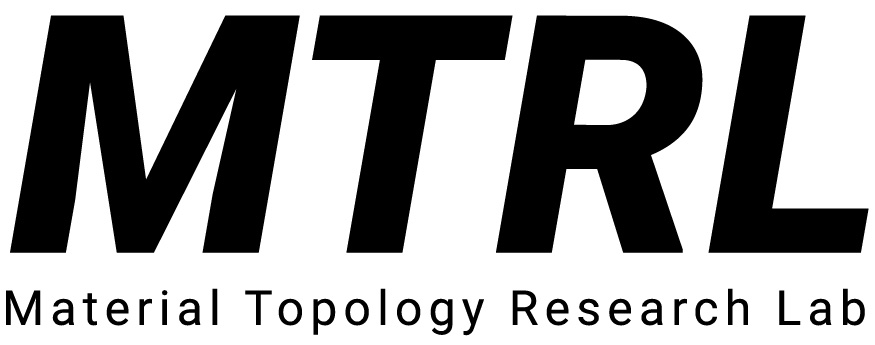

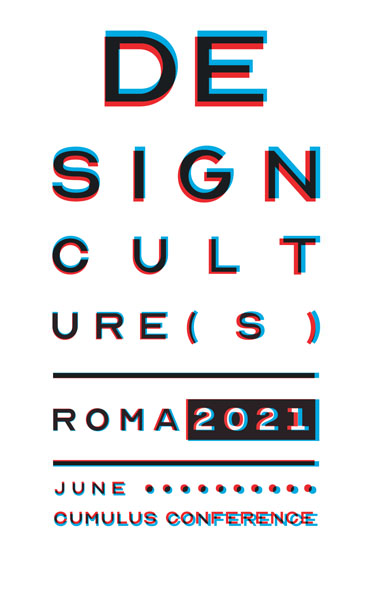
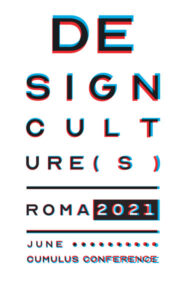 With the growing environmental imperative, designers begin to consider material life-cycles, and return to locally-sourced and on-site found materials in their design. Within this context, and in light of the high contribution of material-transport to the environmental burden, architects re-explore earthen materials. The ability to perform in situ digital fabrication using advanced robotic fabrication tools allows practice to go beyond the alignment of traditional building techniques with contemporary standards. Using increased sensibility, robotic tools can be deployed to reform terrains and reconstitute their soil into architecture. As native soil on site is used to nurture the robotically produced architectural artefact, a new form of materiality emerges, titled here “contextual-digital materiality”, one rooted in the weaving of data, local material, topography and culture. The paper demonstrates three avenues towards it – large scale customization, material-aware construction, and a “material to material” integrated fabrication, which, together, seek to advance greater sensibility at territorial scales.
With the growing environmental imperative, designers begin to consider material life-cycles, and return to locally-sourced and on-site found materials in their design. Within this context, and in light of the high contribution of material-transport to the environmental burden, architects re-explore earthen materials. The ability to perform in situ digital fabrication using advanced robotic fabrication tools allows practice to go beyond the alignment of traditional building techniques with contemporary standards. Using increased sensibility, robotic tools can be deployed to reform terrains and reconstitute their soil into architecture. As native soil on site is used to nurture the robotically produced architectural artefact, a new form of materiality emerges, titled here “contextual-digital materiality”, one rooted in the weaving of data, local material, topography and culture. The paper demonstrates three avenues towards it – large scale customization, material-aware construction, and a “material to material” integrated fabrication, which, together, seek to advance greater sensibility at territorial scales.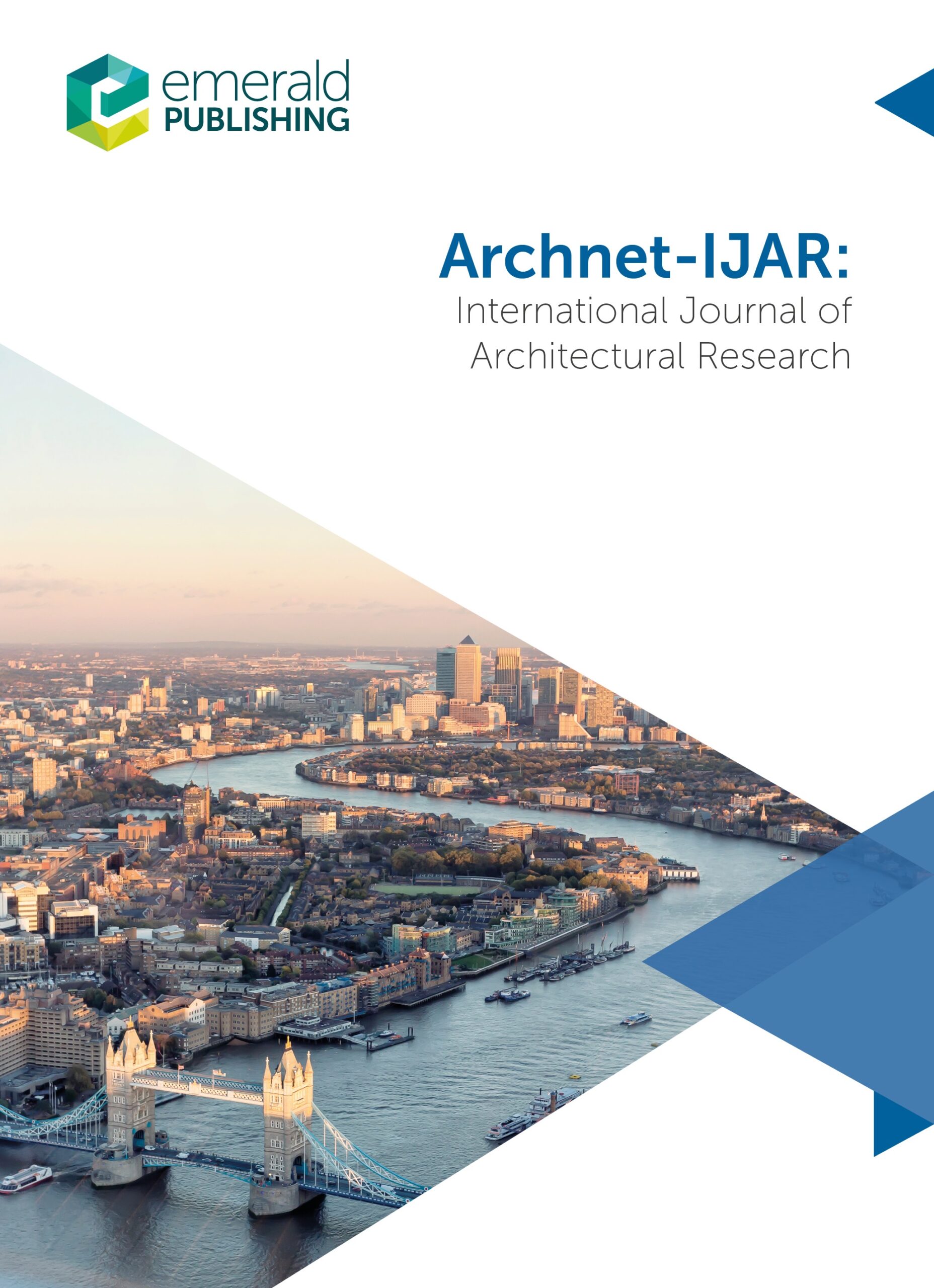
 Advancements in autonomous robotic tools enable to reach increasingly larger scales of architectural and landscape construction and operate in remote and inaccessible sites. In parallel, the relation of architecture to its environment is significantly reconsidered, as the building industry’s contribution to the environmental stress increases. In response, new practices emerge, addressing the reshaping and modulation of environments using digital tools. The context of extra-terrestrial architecture provides a ground for exploring these issues, as future practice in this domain relies on the use of remote autonomous means for repurposing local matter. As a result, the novelty in robotic construction laboratories is tied to innovation in architectural pedagogy.
Advancements in autonomous robotic tools enable to reach increasingly larger scales of architectural and landscape construction and operate in remote and inaccessible sites. In parallel, the relation of architecture to its environment is significantly reconsidered, as the building industry’s contribution to the environmental stress increases. In response, new practices emerge, addressing the reshaping and modulation of environments using digital tools. The context of extra-terrestrial architecture provides a ground for exploring these issues, as future practice in this domain relies on the use of remote autonomous means for repurposing local matter. As a result, the novelty in robotic construction laboratories is tied to innovation in architectural pedagogy.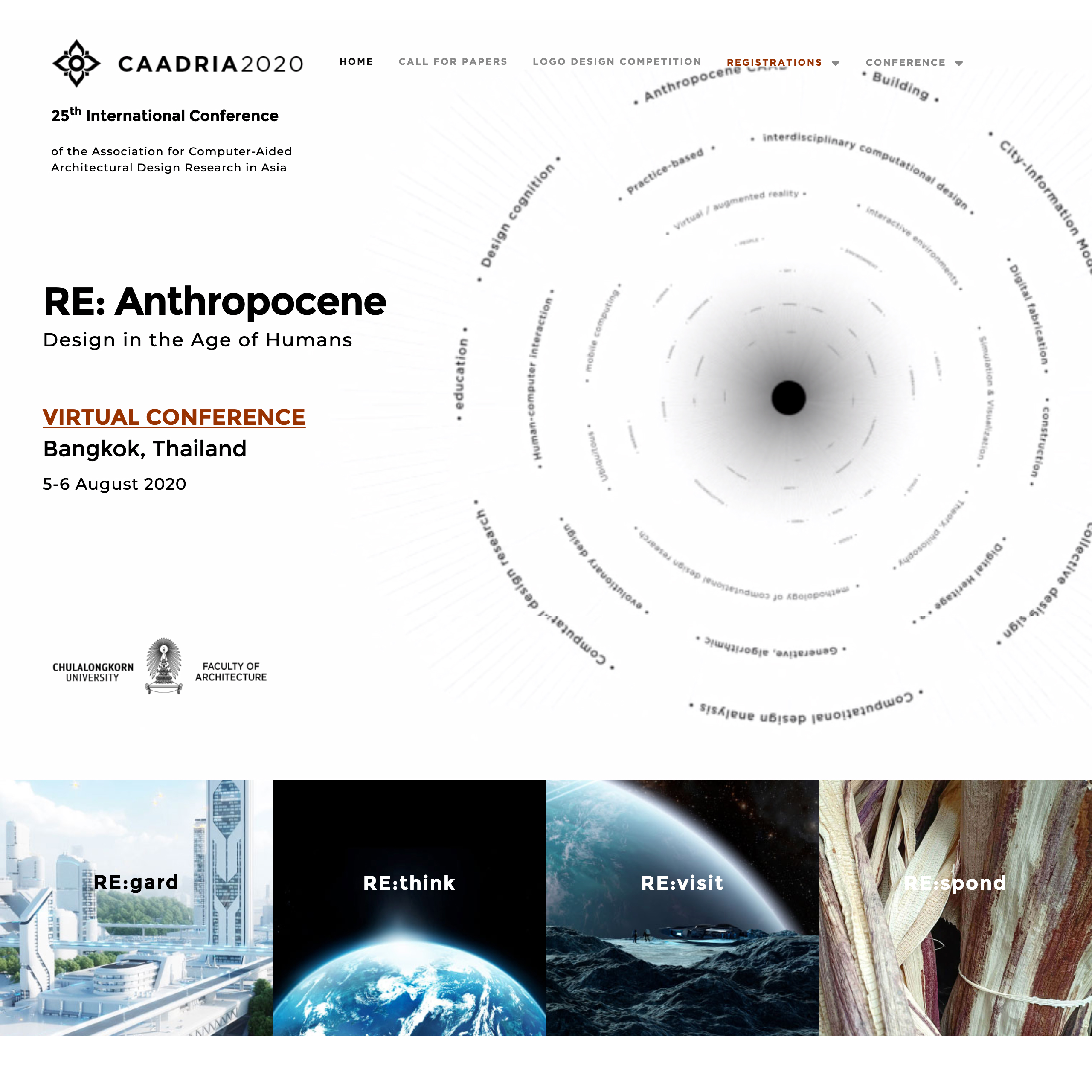
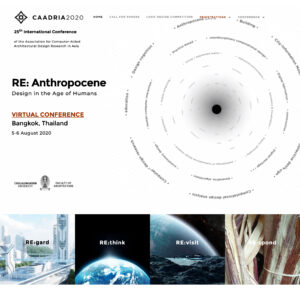 The irreversible imprint of humankind on earth calls for revisiting current construction practices. This paper forwards a vision for post-Anthropocene, large-scale, architectural and landscape construction. This vision relates to the way natural terrains can be transformed into architecture using robotic tools, and the way advanced in situ digital fabrication can enable attainment of greater sustainability through increased sensibility. Despite advancements in large scale digital fabrication in architecture, the field still mainly focuses on the production of objects. The proposed vision aims to advance theory and practice toward territorial scale digital fabrication enabling the production of environments. Three notions are proposed: large-scale customization, material-aware construction, and integrated fabrication. These three aspects are demonstrated through research and teaching projects demonstrating ways for robotic tools and advanced sensing to be applied toward reforming, stabilizing, and reconstituting natural sand. Together, they propose a theoretical ground for large-scale, in situ digital fabrication for a new era, relinking architecture to the terrains upon which it is formed.
The irreversible imprint of humankind on earth calls for revisiting current construction practices. This paper forwards a vision for post-Anthropocene, large-scale, architectural and landscape construction. This vision relates to the way natural terrains can be transformed into architecture using robotic tools, and the way advanced in situ digital fabrication can enable attainment of greater sustainability through increased sensibility. Despite advancements in large scale digital fabrication in architecture, the field still mainly focuses on the production of objects. The proposed vision aims to advance theory and practice toward territorial scale digital fabrication enabling the production of environments. Three notions are proposed: large-scale customization, material-aware construction, and integrated fabrication. These three aspects are demonstrated through research and teaching projects demonstrating ways for robotic tools and advanced sensing to be applied toward reforming, stabilizing, and reconstituting natural sand. Together, they propose a theoretical ground for large-scale, in situ digital fabrication for a new era, relinking architecture to the terrains upon which it is formed.
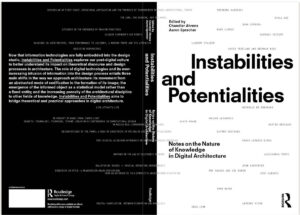 This essay presents an exercise that was performed by an architect and a neuroscientist as the means to produce a method in which a robot can practice crafts usually performed by humans.The ideas exchanged in this discussion defined a framework for a set of experiments examining the possibility of integrating concepts and methods from both architecture and neuroscience into a fabrication method that shared a single platform—a robotic arm. The actual exchange of ideas was based on writing an imagined course of action (case studies), then translating the action into computer code using the specific platform for each field: 1) A computer-aided design (CAD) software that was integrated with a visual programming language for parametric design and 2) a multi-paradigm numerical computing environment for neuroscience.These tools not only defined a professional boundary but also provided insight into the different concerns occupying each of the fields—e.g., while the architectural platform is completely dependent on the 3D representation of objects in virtual space, the scientific one is primarily focused on data-driven operations. Consequently, the concerns that arose from each mind-set were inherently different. Each produced distinct questions that resulted in different courses of action, and each arrived at its own set of criteria for evaluation, validation, and success. While the architect was focused on the product of making, the neuroscientist, in this case, was focused on the process of making.
This essay presents an exercise that was performed by an architect and a neuroscientist as the means to produce a method in which a robot can practice crafts usually performed by humans.The ideas exchanged in this discussion defined a framework for a set of experiments examining the possibility of integrating concepts and methods from both architecture and neuroscience into a fabrication method that shared a single platform—a robotic arm. The actual exchange of ideas was based on writing an imagined course of action (case studies), then translating the action into computer code using the specific platform for each field: 1) A computer-aided design (CAD) software that was integrated with a visual programming language for parametric design and 2) a multi-paradigm numerical computing environment for neuroscience.These tools not only defined a professional boundary but also provided insight into the different concerns occupying each of the fields—e.g., while the architectural platform is completely dependent on the 3D representation of objects in virtual space, the scientific one is primarily focused on data-driven operations. Consequently, the concerns that arose from each mind-set were inherently different. Each produced distinct questions that resulted in different courses of action, and each arrived at its own set of criteria for evaluation, validation, and success. While the architect was focused on the product of making, the neuroscientist, in this case, was focused on the process of making.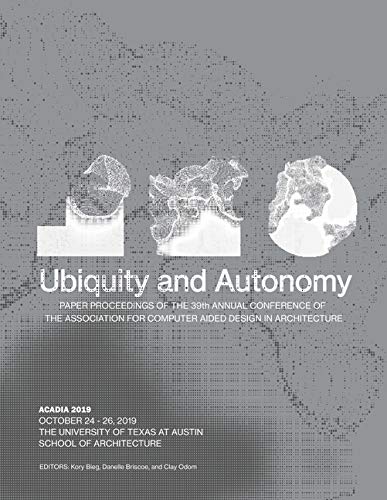
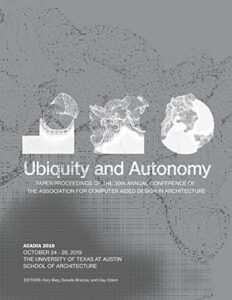 Advancements in robotic fabrication are enabling on-site construction in increasingly larger scales. In this paper, we argue that as autonomous tools encounter the territorial scale, they open new ways to embed information into it.
Advancements in robotic fabrication are enabling on-site construction in increasingly larger scales. In this paper, we argue that as autonomous tools encounter the territorial scale, they open new ways to embed information into it.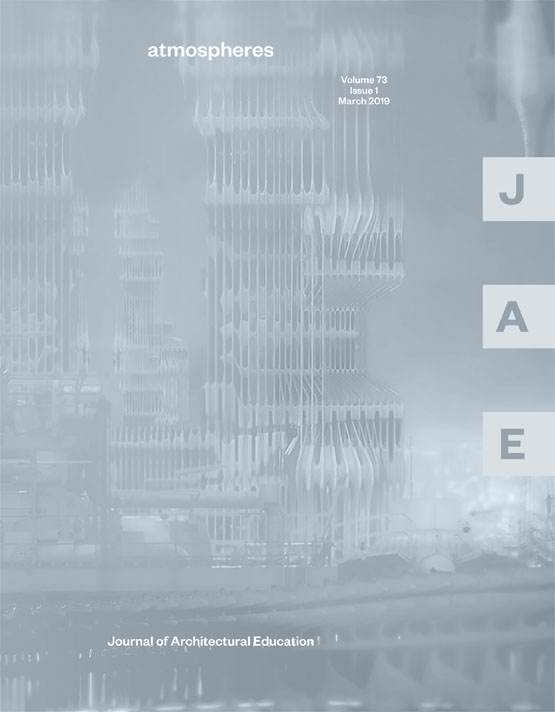
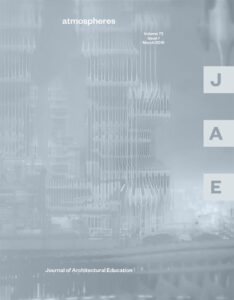 It is 75°F inside, and 9°F degrees outside. It is late April, yet the ground is still covered with snow. The diner is dark, the solstice sun falling on the leather upholstered double-bench, ready to seat four. The Hotel Royal is empty though faint sounds of dishes being cleaned arise from the back. It is afternoon, but it might as well be morning. The sun’s position in the sky has barely changed—its intensity has neither increased nor diminished. It will stay that way until late evening. Further down the hallway is the elongated bar with its four gambling machines. It is even darker. As the evening descends, locals will start to arrive.
It is 75°F inside, and 9°F degrees outside. It is late April, yet the ground is still covered with snow. The diner is dark, the solstice sun falling on the leather upholstered double-bench, ready to seat four. The Hotel Royal is empty though faint sounds of dishes being cleaned arise from the back. It is afternoon, but it might as well be morning. The sun’s position in the sky has barely changed—its intensity has neither increased nor diminished. It will stay that way until late evening. Further down the hallway is the elongated bar with its four gambling machines. It is even darker. As the evening descends, locals will start to arrive.